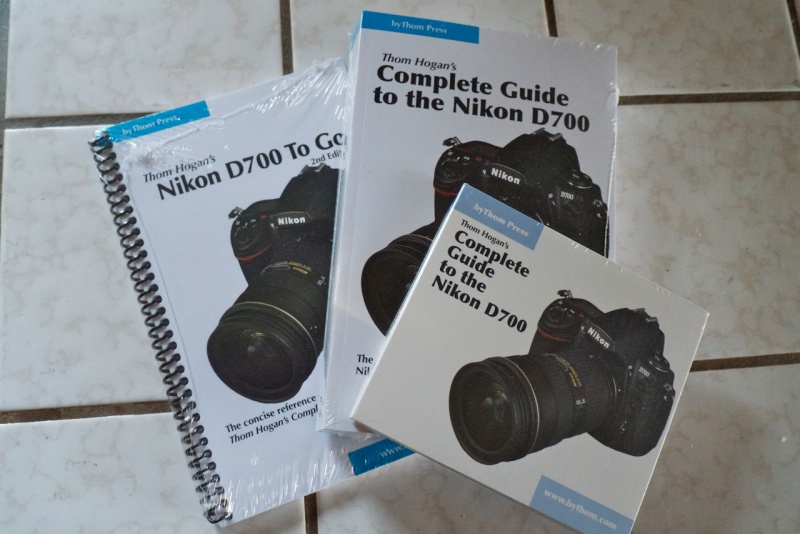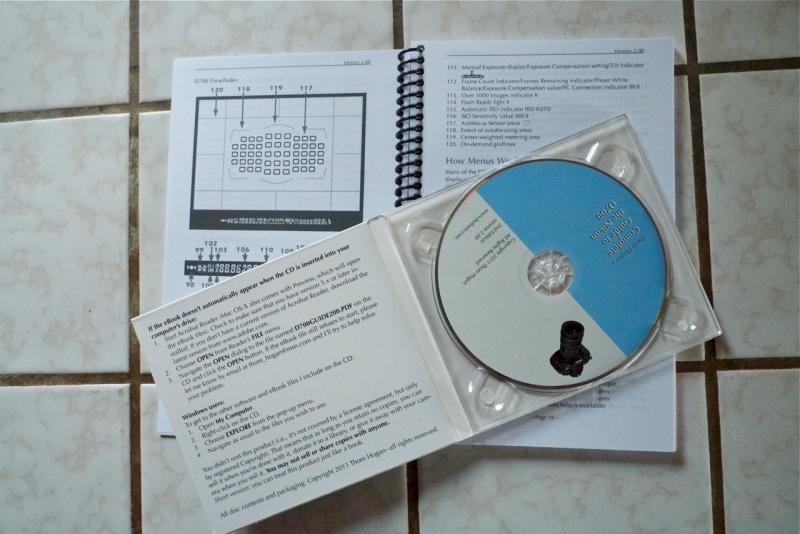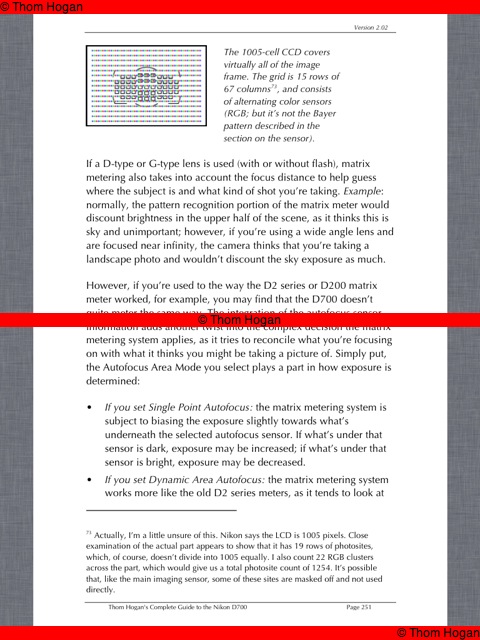The book the factory never published.
I wrote earlier about the poorly thought out Nikon factory manual which comes with the D700. So when esteemed New York photographer Joseph O. Holmes recommended the one written by Thom Hogan, I paid attention. Joe’s life is all about making pictures, not collecting gear, so that opinion meant a lot. On his blog, Joe writes:

A bit of checking on the author disclosed he is a long time Nikon expert, so I ponied up the $80 for the book and PDF version. Hogan does not sell a downloadable PDF, probably to control theft, so you have to wait on the USPS to do its thing. Now that the Apple iBookstore is up and running, hopefully he will offer the upcoming book for the D800 through that distribution medium, where DRM protection should prevent illegal copying far better, and where shipping and packaging costs are zero. The offset is the 30% distribution fee charged by Apple.

As shipped.
While you can get just the PDF on CD with the spiral bound pocket guide, I opted for the version which also adds the 800 page (!) paperback, all for $80. In retrospect that was wrong. The $47 CD version is the best choice if you have an iPad. I moved the PDF to my iPad 1 and it’s a far better reading experience, using GoodReader. In addition to all the quick search and find, bookmarking and annotation functions offered by GoodReader in the iPad version, the definition in photographs is far better – and in color – than that offered by the mass market printing adopted for the book, an understandable economy. Let’s also hope that the D800 version has dynamic links in the index, so that the reader will simply be able to touch a page number to go there. Finally, the next book should also include the handy ‘To Go’ 120 page summary in electronic format, for use on an iPad. In the one I received the ‘To Go’ booklet is available in spiral bound, printed form only.

The CD and the To Go spiral bound summary guide.
Neither the DRM Apple distribution channel (or Kindle for that matter) or easy dynamic linking were available when this PDF was put together some four years ago, so it’s not so much a criticism as a request. Excluding shipping the CD sells for $40, so sell it for $56 through the Apple Bookstore and you still net $40. Would I pay $56 for this download? You bet. The book is excellent. For a $2,000+ camera body, and additional $50 or so to get the best out of the hardware is a modest sum.
Thom writes in response to the above:
“I don’t sell downloads because downloads aren’t actually sales, they’re rentals covered by a license agreement. The way I sell my ebook means that people can treat it just like a regular book. In other words, it has value, and can be sold when you’re done with it (assuming you don’t keep copies). Try that with a DRM book. I’m considering making a change in the future, however, that will also means drastic changes in what you can and can’t do with my books, which is a shame.”
An 800 page manual is overwhelming at first, but once you learn to take it in small installments, camera to hand, you quickly realize just how expert Thom Hogan is and how well he writes. It was no surprise to learn that he was the software architect behind the wonderful Osborne One computer, my first, which I bought in 1981. That machine taught me Wordstar, Supercalc and dBase II, all of which came packaged with Gary Kildall’s superb CP/M operating system and gave me a massive jump on the competition when it came to computer competence – the word processing, spreadsheet and database skills readily transferred to the fabulous IBM PC when that machine was announced. Thom Hogan’s skill with software design transitions easily to his technical writing, which is of a high standard.
As an example, take a look at this extract where he explains the vagaries of matrix metering in the D700:

“Wow! I didn’t know that!” is a recurring reaction when reading this manual.
Here’s a case in point. Try as I might, I simply could not get exposure bracketing to work using the factory manual. The D700’s capabilities in this regard, along with the time lapse intervalometer which is built into the body are extraordinarily flexible …. and complex. I didn’t even know there was an intervalometer! Thom Hogan’s manual made it easy to understand how to set up auto-bracketing and how to avoid the need to have to count how many exposures in the bracketing sequence have been made. As the D700 can bracket up to nine (!) exposures that’s a non-trivial capability. The benefits of bracketing in conferrring massive 11-12 stop dynamic range with minimal noise are exceptional and the Hogan guide makes it all clear. And I thought my (second hand) D700 was faulty until I learned better! Worth the price of the manual alone.
Another example. Did you know the camera can be set to take multiple exposures – up to 10 – merging these into one file? Another lesson learned.
If you are prepared to take the time to digest this book you will come away far better informed and superbly equipped to really wring the very best performance out of the D700, or for that matter, any Nikon for which you buy one of Thom Hogan’s guides. I would expect his D4 and D800/D800E versions to be hot sellers, based on this. Highly recommended. This is the user guide the factory never published.